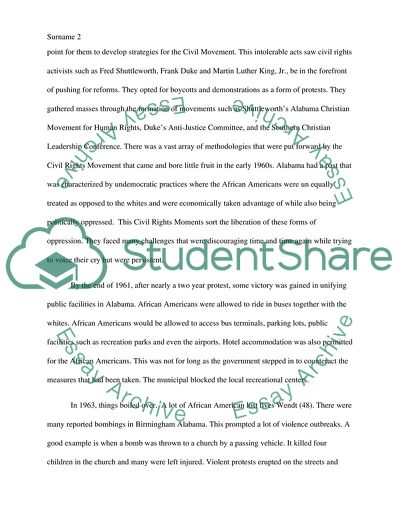Cite this document
(The Civil Rights Movement in Alabama in the 1960s Term Paper, n.d.)
The Civil Rights Movement in Alabama in the 1960s Term Paper. https://studentshare.org/history/1801137-it-is-up-to-the-writer
The Civil Rights Movement in Alabama in the 1960s Term Paper. https://studentshare.org/history/1801137-it-is-up-to-the-writer
(The Civil Rights Movement in Alabama in the 1960s Term Paper)
The Civil Rights Movement in Alabama in the 1960s Term Paper. https://studentshare.org/history/1801137-it-is-up-to-the-writer.
The Civil Rights Movement in Alabama in the 1960s Term Paper. https://studentshare.org/history/1801137-it-is-up-to-the-writer.
“The Civil Rights Movement in Alabama in the 1960s Term Paper”. https://studentshare.org/history/1801137-it-is-up-to-the-writer.


